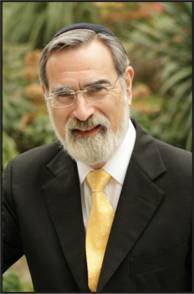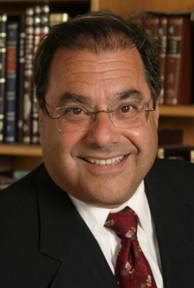The Kosher Bookworm: New beginnings for Genesis
Among the most creative expositions on the Book of Genesis are works by two of the most learned essayists of our sacred writings, Rabbi Sir Jonathan Sacks, chief rabbi of the United Hebrew Congregations of the Commonwealth and Rabbi Shlomo Riskin, chief rabbi of Efrat, Israel.
Rabbi Sacks’ volume is titled, “Covenant and Conversation: Genesis — The Book of
Beginnings” [Maggid Books and The Orthodox Union, 2009]. Contained herein is a collection of some of Rabbi Sacks’ finest essays on the twelve parashot of Sefer Bereishit.
Each portion has between four and five essays on a specific theme within the text of the Chumash. It is how Rabbi Sacks links the events in the bible text to historical events of world history that makes this commentary unique — events that were in some way linked thematically, or foreshadowed by the biblical narrative.
Some of these events deal with human cloning, economics and political theory, and personalities such as the Roman Emperor Constantine, Russian intellectual Nikolai Berdyaev, Polish Jewish psychologist and Holocaust martyr Dr. Janusz Korczak and many classic rabbinic commentators; even Shakespeare makes a cameo appearance. I was particularly taken by a citation by noted physicist and defender of the Jewish religious tradition, Dr. Gerald Schroeder, with a take concerning the context of the creation story.
Rabbi Riskin’s work is titled “Torah Lights, Bereshith: Confronting Life and Family” [Maggid Books, 2009]. It is a collection of traditional Divrei Torah — five to eight sermon-style essays for each parsha - that reflect, in an exquisite modern cadence, an eloquent commentary on the ancient Biblical text.
Aside from classical commentaries, Rabbi Riskin cites contemporary commentators like Rabbi Yaakov Kamenetzky, Rabbi Abraham Isaac Kook, Rabbi Joseph B. Soloveitchik, Dr. Nechama Leibowitz, and Rabbi Haim David Halevi, all of blessed memory.
Both seforim are the forerunners of future volumes that will encompass the entire Chumash.
For the younger set may I bring to your attention a new book titled “JPS Illustrated Children’s Bible” [Jewish Publications Society, 2009], by the veteran writer of Jewish folklore and Midrash, Dr. Ellen Frankel, and illustrated by artist Avi Katz.
In addition to an engaging text and illustrations, what particularly grabbed my attention is an eight-page essay at the end of the book titled, “Writing A Jewish Children’s Bible: An Author’s Notebook.” In a candor uncommon for any writer, Frankel provides a justification for the manner in which this book is written in terms of diction, translation, editing, commentary, objectionable or adult material and gender.
Dr. Frankel’s forthright candor should not only to be appreciated by the readers and their parents, but also serve as an example for other authors and their publishers, as a source of accountability for the rationale that goes with their craft. If more would follow Frankel’s example, it would go a long way toward improving the quality of American English-language Jewish literature.
Two other recently issued commentaries on Genesis will, with G-d’s help, be featured in forthcoming columns. One is “The Essential Malbim,” the other a long-awaited translation of the near classic “Aleinu L’shabeiach,” both published by Artscroll.
The recent translation of Rav Chaim of Volozhin’s “Nefesh Hachaim” [Judaica Press, 2009] will be reviewed within the context of Rabbi Norman Lamm’s classic study and analysis of this work titled, “Torah Lishmah.” First published twenty years ago, the work is still available from Ktav Publishers.

 47.0°,
Mostly Cloudy
47.0°,
Mostly Cloudy 











